Tom's Guide Verdict
TP-Link's Archer C2300 is fast, cheap and secure. The router excels in Wi-Fi performance and includes antivirus protection.
Pros
- +
Top performer
- +
Inexpensive
- +
Built-in antivirus protection
- +
Two-year warranty
Cons
- -
Runs hot
Why you can trust Tom's Guide
Wi-Fi spec: AC2300
Number of antennas/removable: 3/Yes
Ports: 1 WAN/4LAN gigabit per second, USB 2.0, USB 3.0
Processor/memory/storage: Broadcom dual-core 1.8GHz/512MB/128MB
Wi-Fi chip: Broadcom BCM4365E
Peak 802.11ac performance: 939.6Mbps (at 5 feet)
Range: 110 feet
Size: 8.5 x 7.5 1.5 inches
The TP-Link Archer C2300 ($149) is so ordinary-looking that it can hide in plain sight, but it's one of the most powerful wireless routers you can buy. It led the field in data delivery, and it comes with anti-malware filtering, easy-to-use quality of service and a two-year warranty. As our TP-Link Archer C2300 review makes clear, it's a big bargain in a small package, and one of the best Wi-Fi routers you can buy.
Editor's Note: We periodically update our reviews to make sure that pricing and information is up to date. The rating and recommendation in our TP-Link Archer C2300 review is unchanged from when it originally published in August of 2018.
TP-Link Archer C2300 review: Design
Don't let the TP-Link Archer C2300's appearance fool you. It may look like a mild-mannered, run-of-the-mill home router, but it has the heart of an online tiger. Aimed at home networking, the C2300 rivals highfliers like the Linksys WRT 32X and Netgear Nighthawk XR500 in performance. The closest thing to a home-networking version of the stealth fighter, it's powerful, yet blends in with the background.
This is a hot router in more ways than one. The black, rectangular design has a huge heat sink below the surface and a vented top to dissipate heat. Its case was warm to the touch, topping out at 100 degrees Fahrenheit.
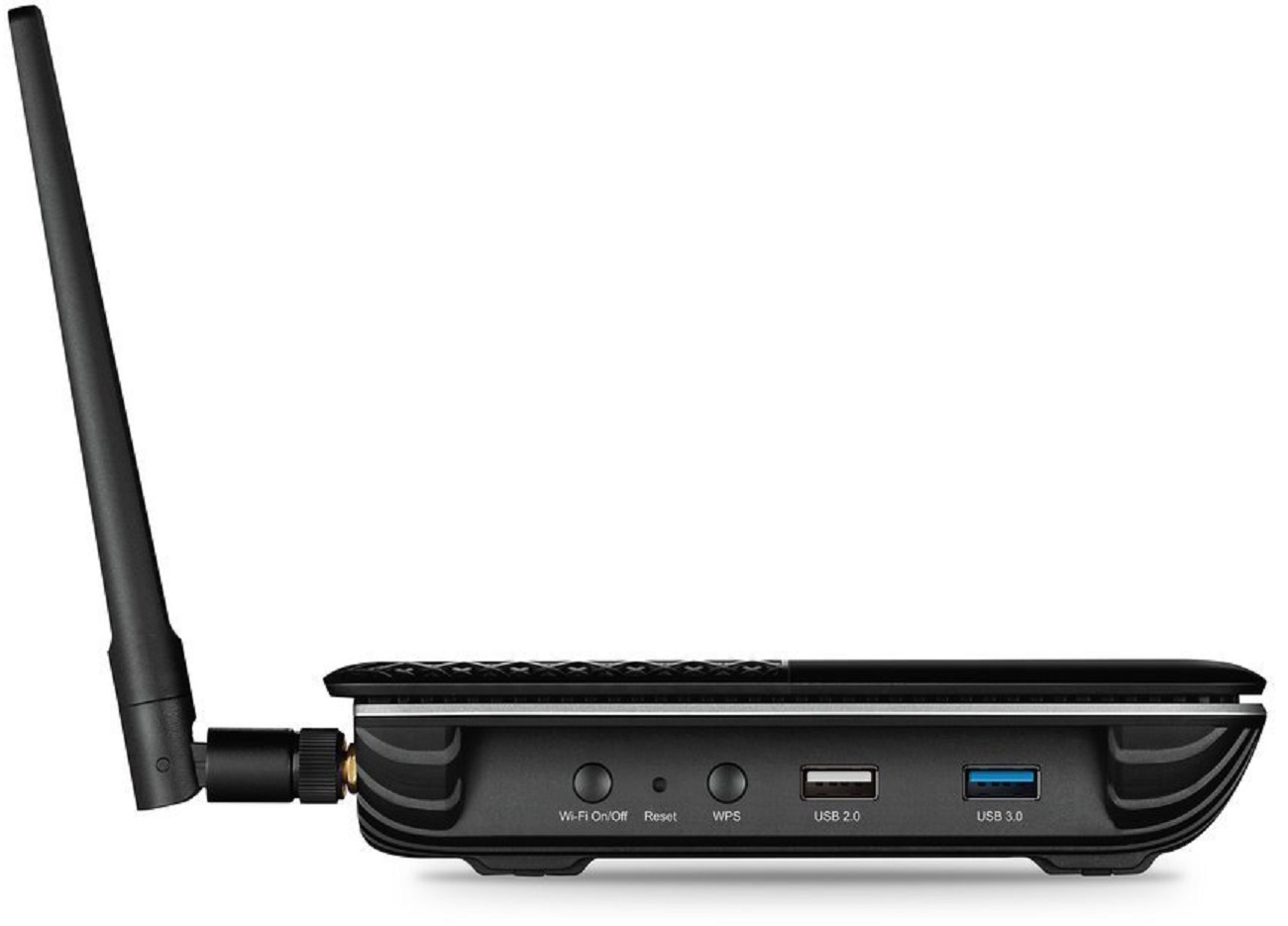
The 8.5 x 7.5 x 1.5 inch C2300 is about the size of a cigar box, or roughly one-third the size of the Nighthawk XR500. TP-Link's router easily fits on a shelf, and the bottom has cutouts for wall mounting.
Inside, the C2300 has Broadcom's BCM4365E Wi-Fi chip, which sets up a dual-band network to move three independent lanes of data traffic. Behind the scenes, there's 512MB of RAM and 128MB of flash storage, which adds up to a maximum throughput of 600 Mbps in 2.4GHz mode and 1.625 Gbps in 5GHz mode. Total theoretical bandwidth: 2.225 Gbps.
Don't let the TP-Link Archer C2300's appearance fool you. It may look like a mild-mannered, run-of-the-mill home router, but it has the heart of an online tiger.
This router may do without the WRT 32X's Killer Prioritization engine and the Nighthawk XR500's geo-filtering feature, but the C2300 uses TP-Link’s Quality of Service (QOS) software to apportion available bandwidth. The C2300 adds Broadcom's NitroQAM modulation technology, which can boost data-delivery speeds by as much as 25 percent by squeezing more data into the available frequencies. In other words, it's a high-performance router in everything but name.
Rather than an array of flashing lights, the C2300 has four demure, light blue indicators. They show whether the system is turned on, if it has an internet connection, and if there's activity on the 2.4 and 5GHz bands. You can turn these lights off with a single switch on top.
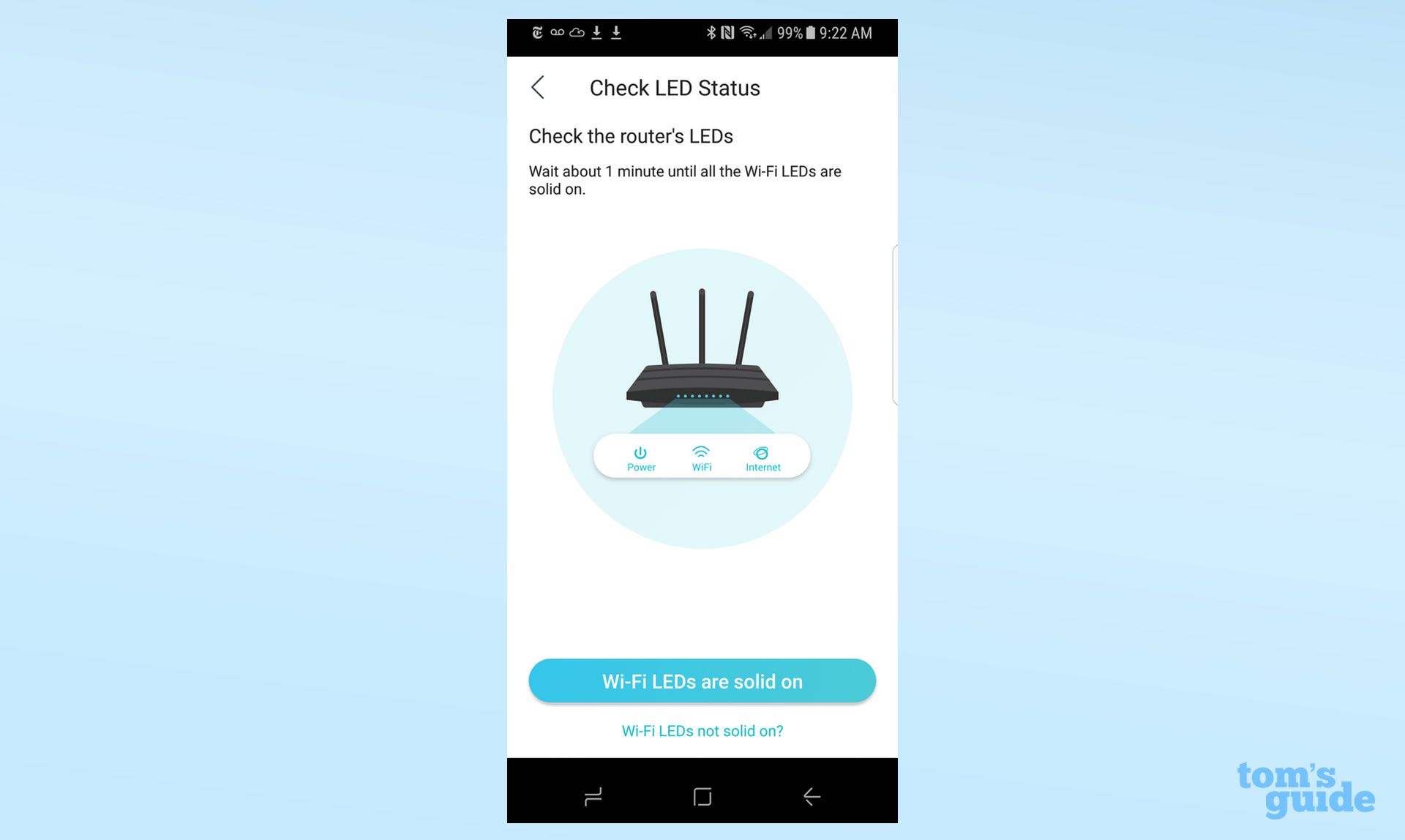
On the back, there's an on/off switch, a WAN and four LAN gigabit-per-second Ethernet ports. On the side, are USB 2.0 and USB 3.0 ports for attaching a hard drive or printer, alongside a recessed reset switch and a Wi-Fi Protected Setup button for quick connections. There's a handy key for turning the router's Wi-Fi transmissions off, which transforms it into a wired router.
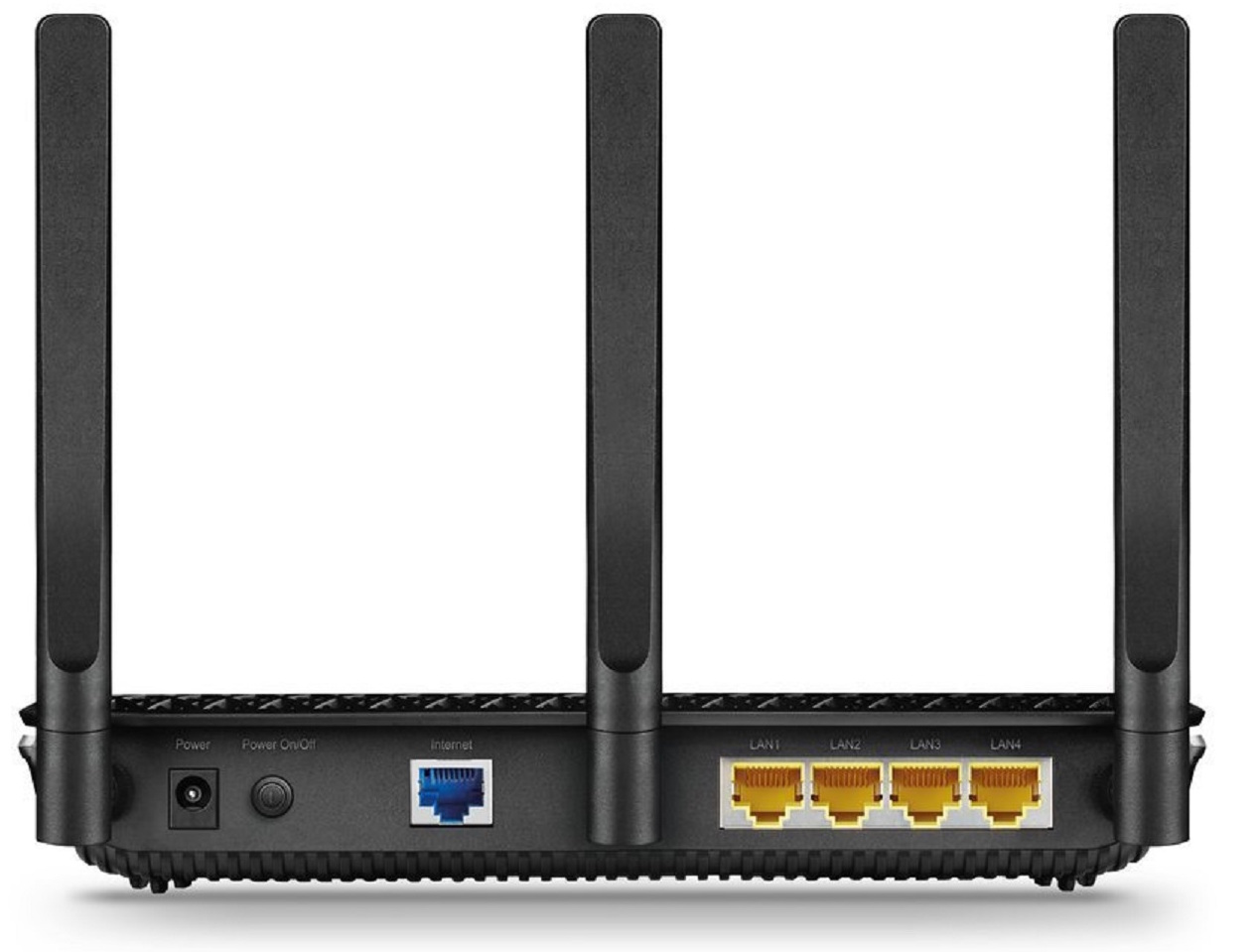
The router has three screw-on antennas, but unlike with the Nighthawk XR500, it doesn't matter which goes where. They can rotate and swivel to catch the best signal.
TP-Link Archer C2300 review: Performance
Under its black shell, the C2300 is powered by a Broadcom BCM4365E Wi-Fi chip that uses the latest Mu-MIMO and beam-forming techniques to achieve excellent range and speed. At our Utah facility, using Ixia's ixChariot software, the router quickly established itself as the router to beat.

With a top speed of 963.6 Mbps, it is the top dog in the router world and comes close to distributing 1 Gbps of data. It was 42 percent faster than the WRT 32X (544.5 Mbps at 15 feet), 28 percent faster than the Norton Core (672.2 Mbps at 5 feet) and 24 percent faster than the Nighthawk XR500 (715.4 Mbps at 15 feet).
This throughput changes as you get farther from the router, with 682.3 Mbps available at 15 feet, which jumps to 913.8 Mbps on tap at 50 feet, making this an excellent midrange router. At 100 and 150 feet, the C2300 pumped out 613.2 and 342.5 Mbps. Only the Norton Core did better, providing 384.1 Mbps at 150 feet.
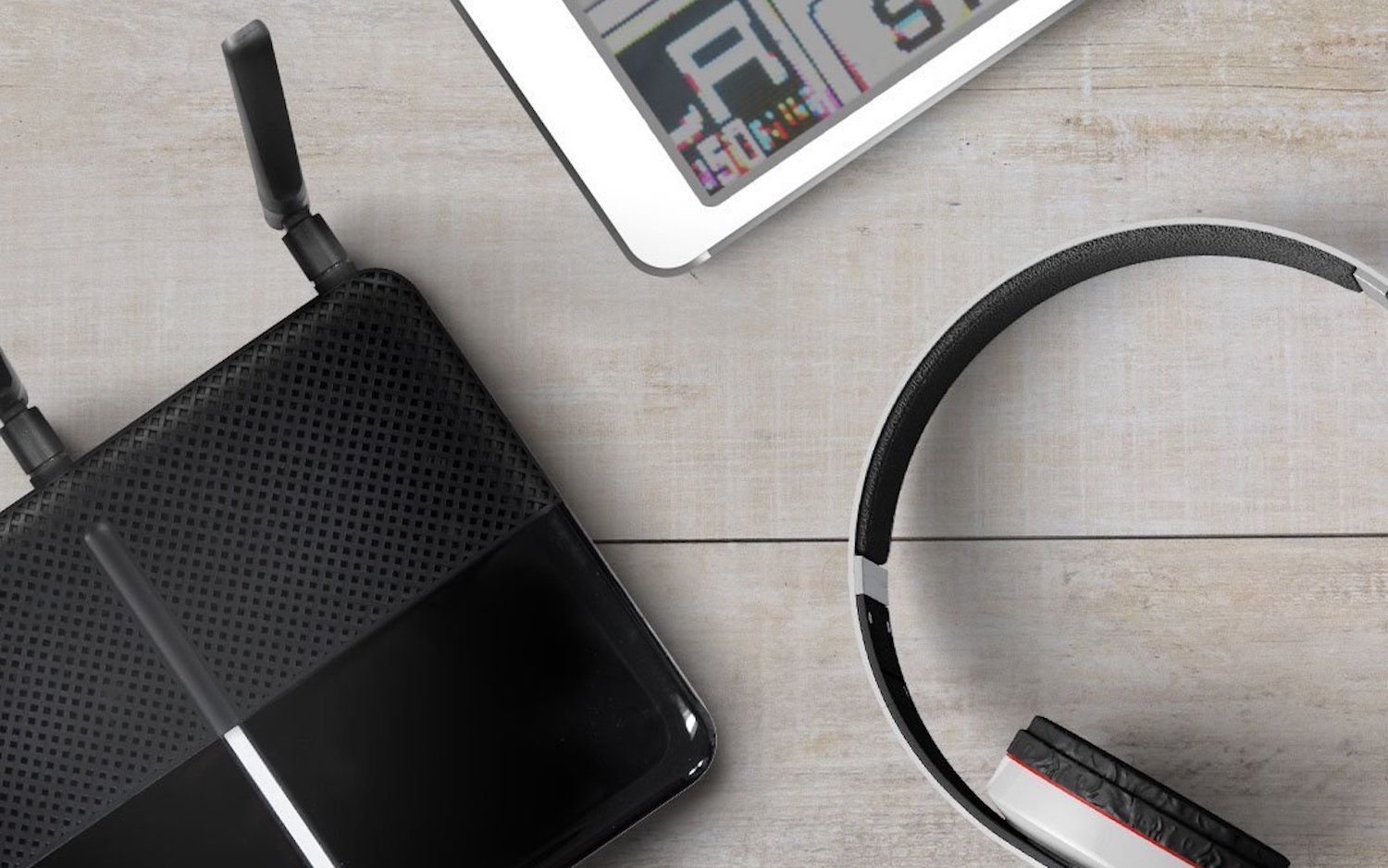
The C2300 set the pace when we tested how well the router pushed its signal through walls and ceilings, with 921.7 Mbps available on the other side of our soundboard wall. That's more than 200 Mbps more data than the 700 Mbps that Norton Core managed.
With a top speed of 963.6 Mbps, this device is the top dog in the router world and comes close to distributing 1 Gbps of data.
TP-Link's router delivered 620.8 and 629.8 Mbps on the other side of our metal wall and ceiling. Those are good rates, but Core was a little better, at 662.6 and 705.8 Mbps for the metal wall and ceiling tests. Still, the C2300 should excel at distributing a data signal in homes with lots of walls and thick ceilings.
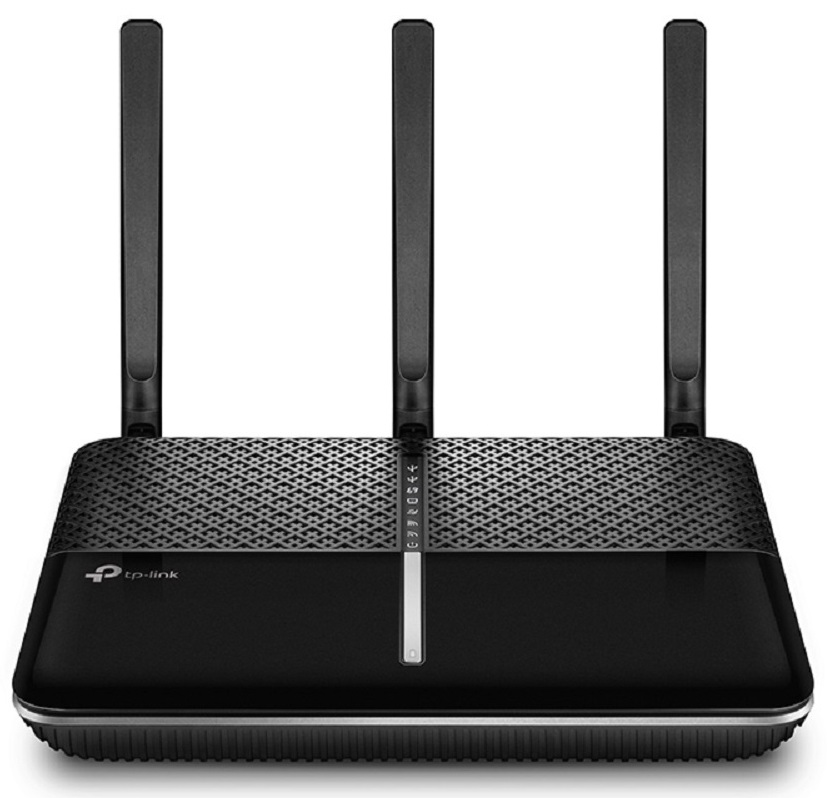
This transmission power was plenty to fill my old, 3,500-square-foot home. The C2300 had a range of 110 feet with my iPad Pro, just short of the Nighthawk XR500's 115 feet, but impressive nonetheless. For larger homes, TP-Link's Deco mesh system can be linked to the C2300.
MORE: Netgear Nighthawk XR500 Pro Gaming Router – Full Review and ...
Along with my regular use of email, video watching and web browsing, I watched League of Legends players zap each other on Twitch and played a few rounds of online games, including Fighter Patrol 42 and Real Racing 3. The router easily passed my informal saturation test, in which I play HD and 4K videos on a Surface Pro 3 and iPad Pro while my Macbook Air plays an internet radio station and a Samsung TabPro S transfers data onto and off of a network storage system. During this workout, there were no skips, dropped frames or artifacts.
TP-Link Archer C2300 review: Setup
TP-Link gives you the freedom of choice to use its Tether Android or iOS app or a browser-based interface to set the system up and customize it. This means you can configure the C2300 with PCs, Macs, iPhones, iPads and Android devices. It can run as either a router or an access point.
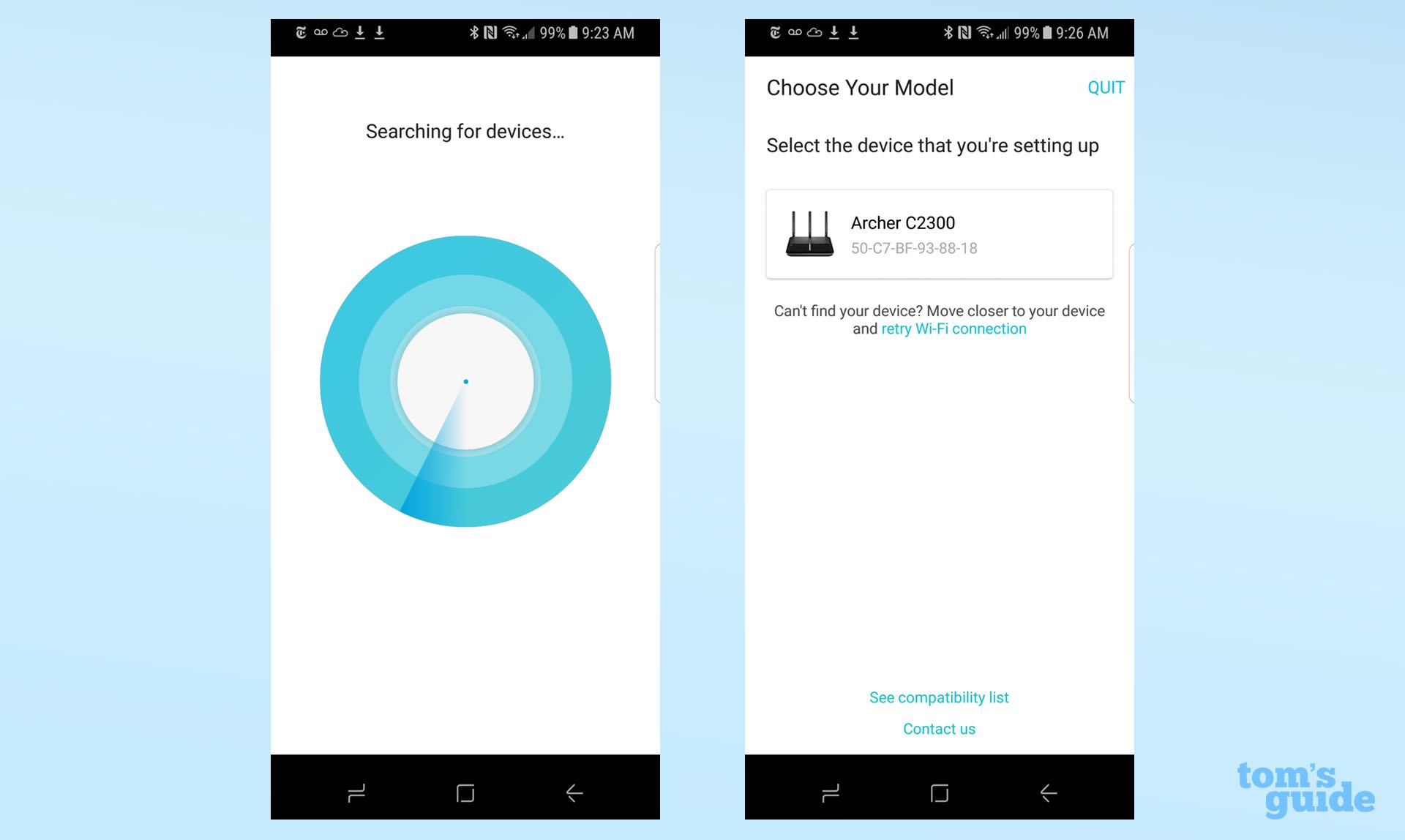
The Tether app provides set-by-step instructions filled with informative illustrations. After agreeing to the company's license, I clicked to set the C2300 up as a router and followed its instructions by plugging the device in and allowing it to start up. A couple of minutes later, the app found the C2300 router. The device comes with its randomized network names and pass codes printed on a card, but it's still a good idea to change them to something more personal and secure. Using the Tether app, it took about 5 minutes to get the C2300 going.
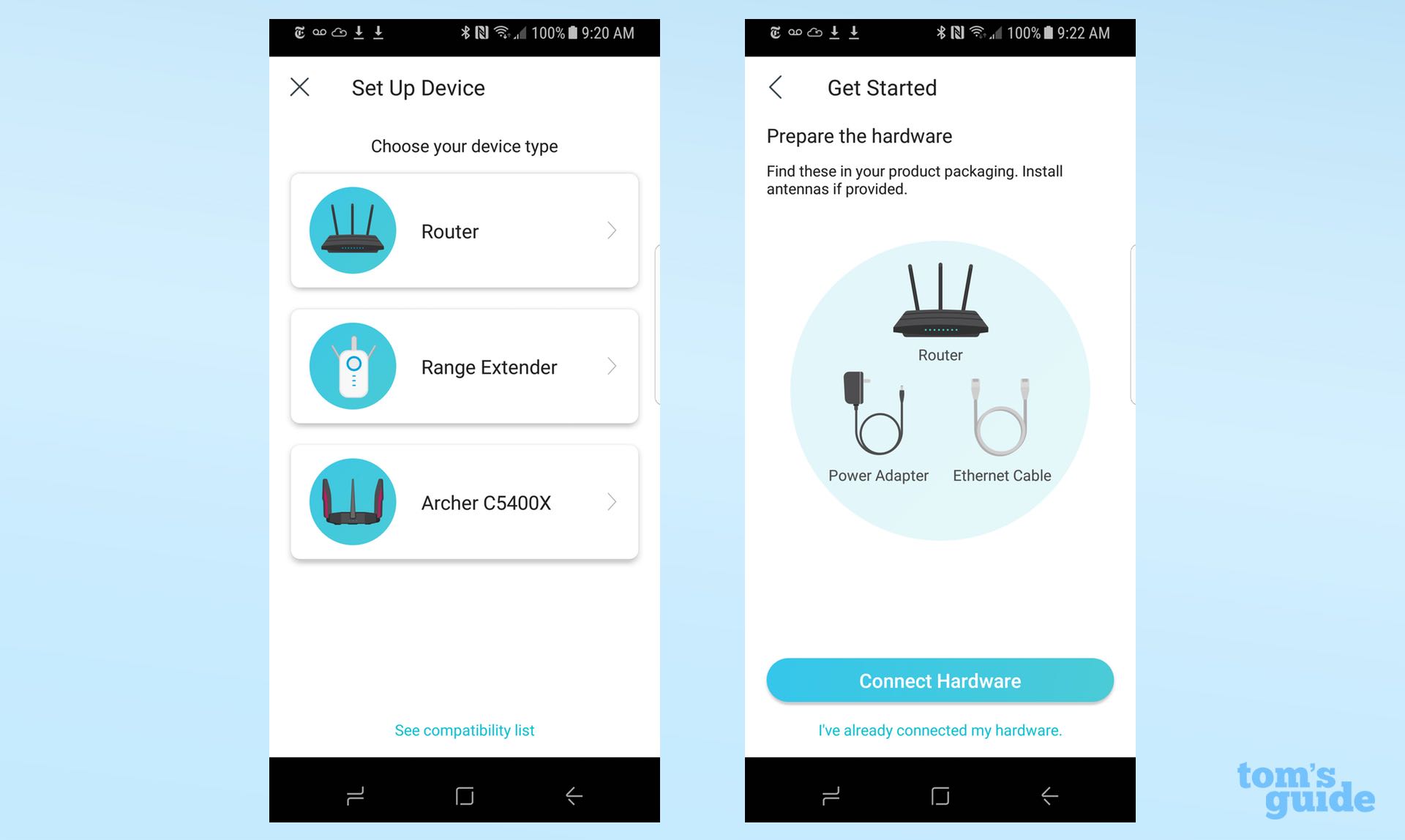
In a similar vein, the browser method uses a Quick Setup Wizard that took me through the setup process. It started with typing, "tplinkwifi.net," into the address window of a connected system. Going right to the router's IP address, 192.168.1.0.1, works just as well.
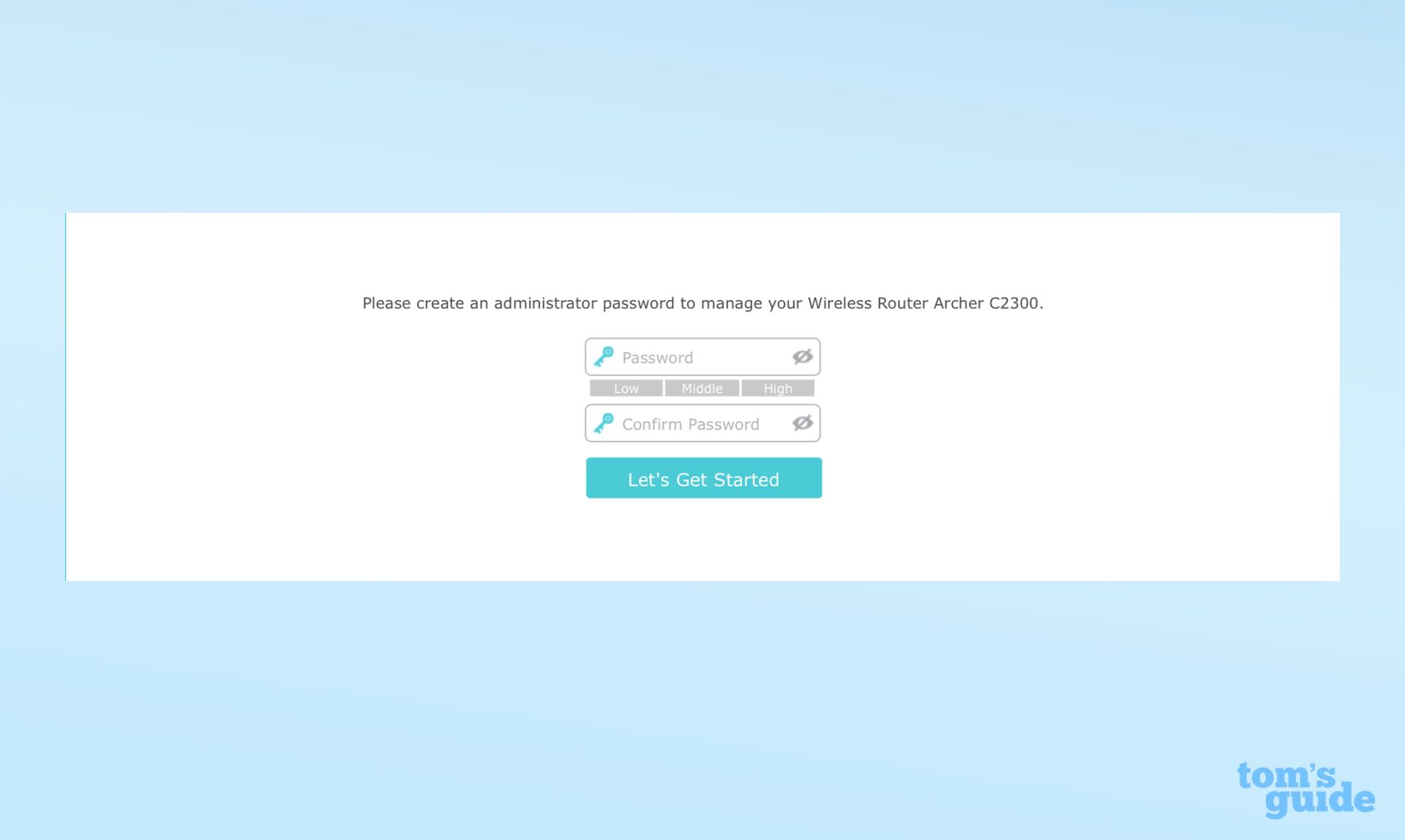
Along the way, the wizard asks questions, like what type of broadband connection you have. Fortunately, it guesses the answer and was correct for my cable modem. When done, the software showed a summary of the settings. All told, it took about 10 minutes from start to finish.
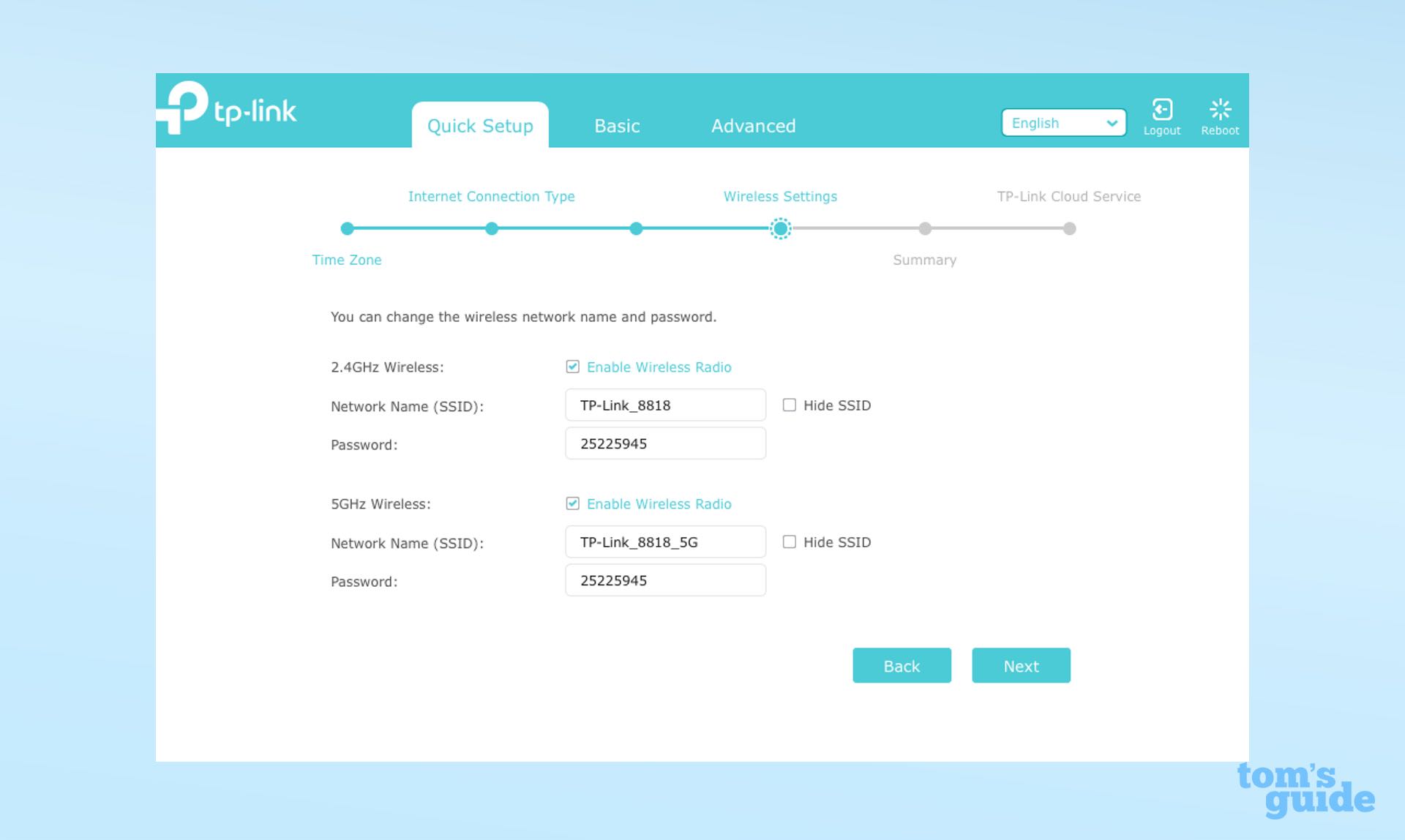
TP-Link Archer C2300 review: Configuration
In addition to showing how many clients are connected and the network's current speed, the router lets you check on the HomeCare antivirus, QOS and parental controls. I took a moment to give my main computer the network's top priority for data so it could assure me the malware filters were active.
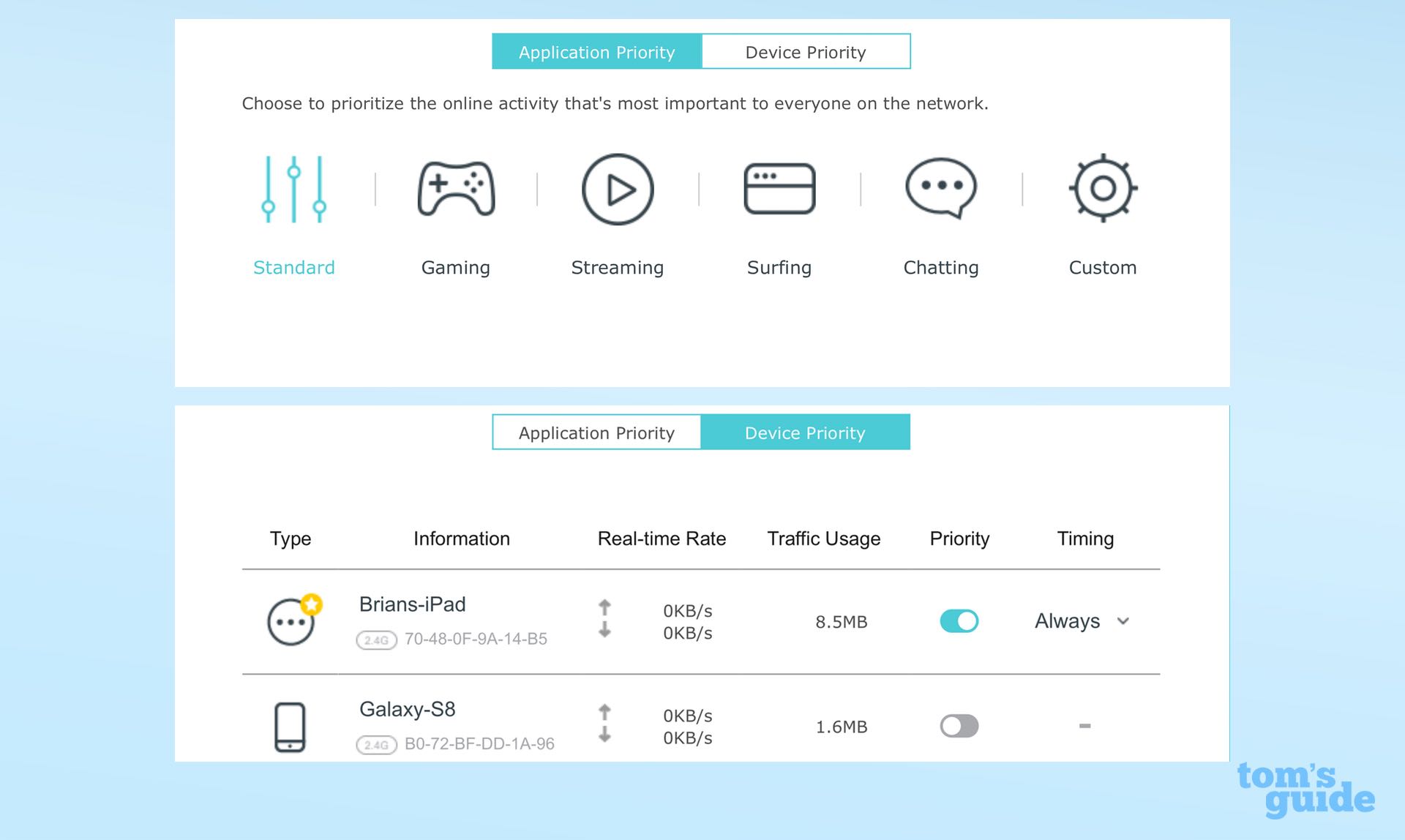
The Advanced section is a cornucopia of customization that allowed me to set the router up for IPv6 use and establish an online usage schedule for a child. I was able to adjust the router's transmission power to avoid having too much signal spill over the boundaries of the house.
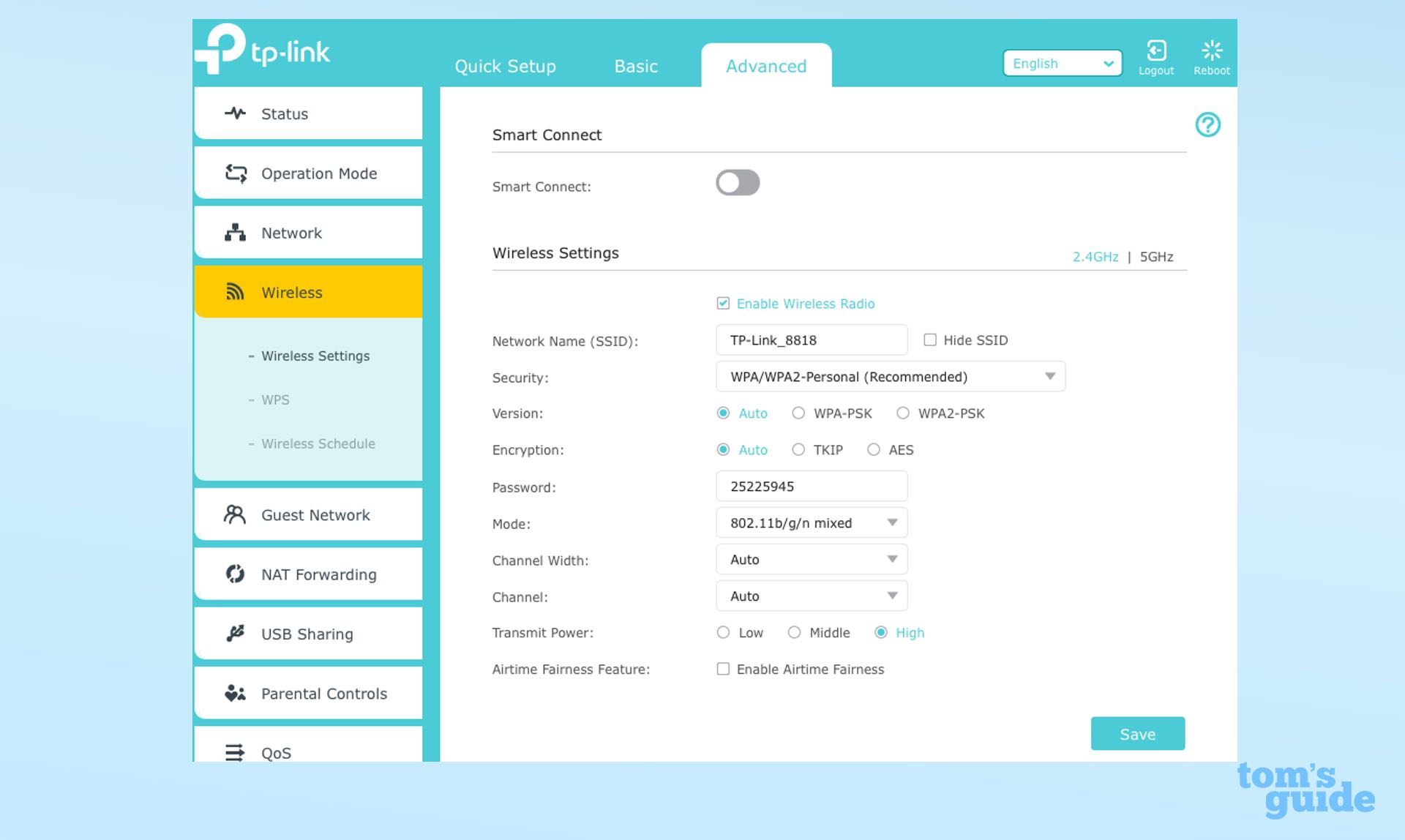
In addition to using WPA2 encryption for client data, the C2300 has a firewall that has been designed to stop a denial-of-service attack. It's one of the rare routers that has antivirus software built-in, to stop malware from attacking your network and its clients. The software comes from Trend Micro and can quarantine infected systems. On the other hand, it lacks the deep-packet inspection of incoming data that Norton's Core provides.
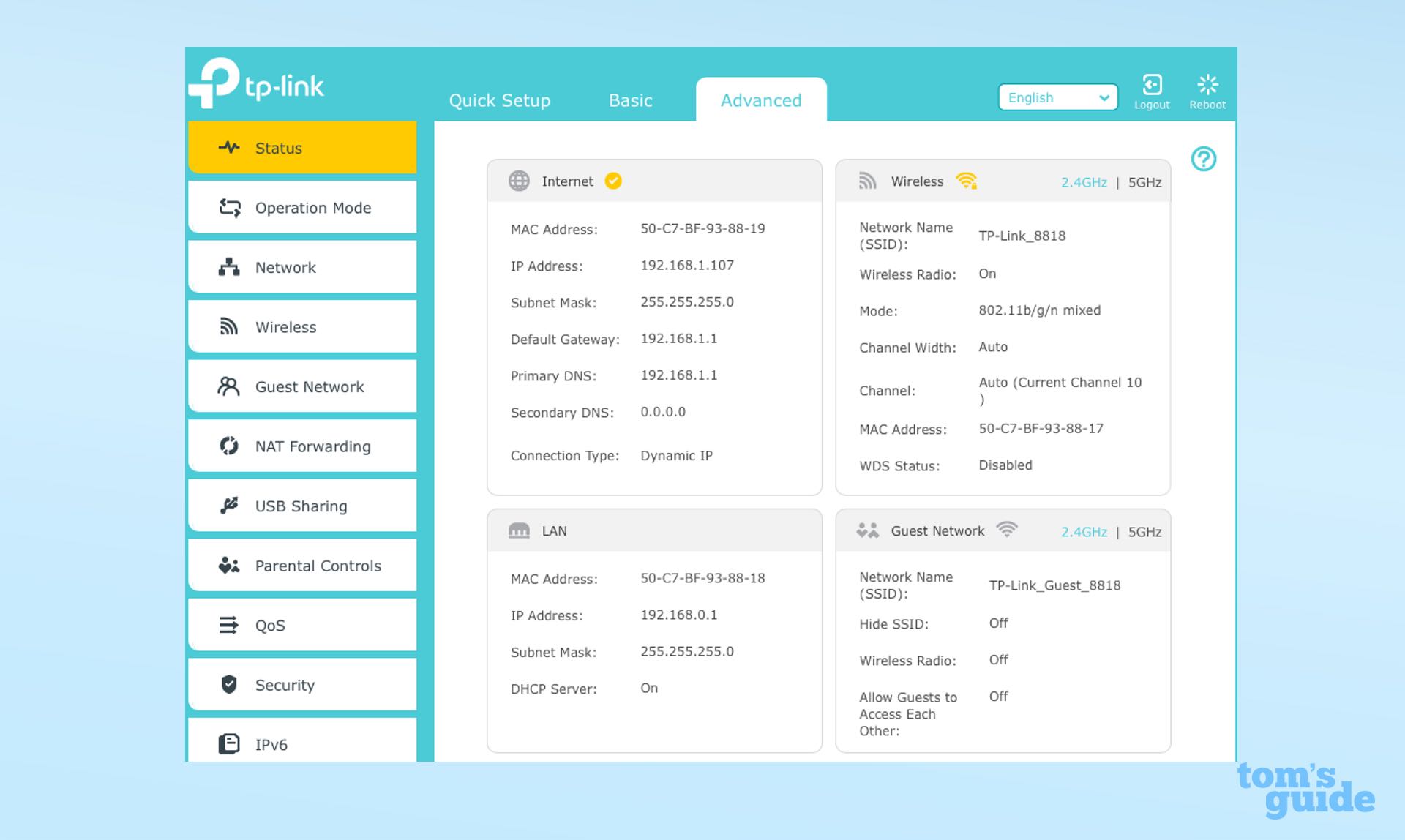
It took about a minute to set up a guest network with separate network name and pass codes. I set it up so that occasional users could connect with websites but not to local resources, like my network storage drive.
TP-Link Cloud Service lets you manage your network from across the room or across the globe. Once you have an account, you can log on and do things like change passwords, update the router's firmware, choose which devices can connect and change the parental controls.
It's one of the rare routers with antivirus software built-in to stop malware from attacking your network and its clients.
In addition to setup videos and downloads of the most recent firmware, the TP-Link support site has FAQs and access to the Tether apps. There's a thorough manual and a browser-based emulator for trying things out before they are permanent changes to the router.
MORE: Your Router's Security Stinks: Here's How to Fix It
Happily, TP-Link provides two years of warranty coverage and support. That is a step and a half ahead of Netgear's 90 days of support help.
TP-Link Archer C2300 review: Verdict
Not only is the TP-Link Archer C2300 the fastest router we've seen, but it's also small, unobtrusive and chock-full of high-end features. It can protect the network from viral and hacker attacks, and you can customize it the way you want. At $149, it costs less than half what the Linksys WRT 32X or Netgear Nighthawk XR500 routers go for, while doubling their warranties to two-years of coverage.
While newer standards like Wi-Fi 6 have come along to offer better speeds and performance, the TP-Link Archer C2300 is still our favorite wireless-AC router, offering great performance for a very affordable price.
Brian Nadel is a freelance writer and editor who specializes in technology reporting and reviewing. He works out of the suburban New York City area and has covered topics from nuclear power plants and Wi-Fi routers to cars and tablets. The former editor-in-chief of Mobile Computing and Communications, Nadel is the recipient of the TransPacific Writing Award.


